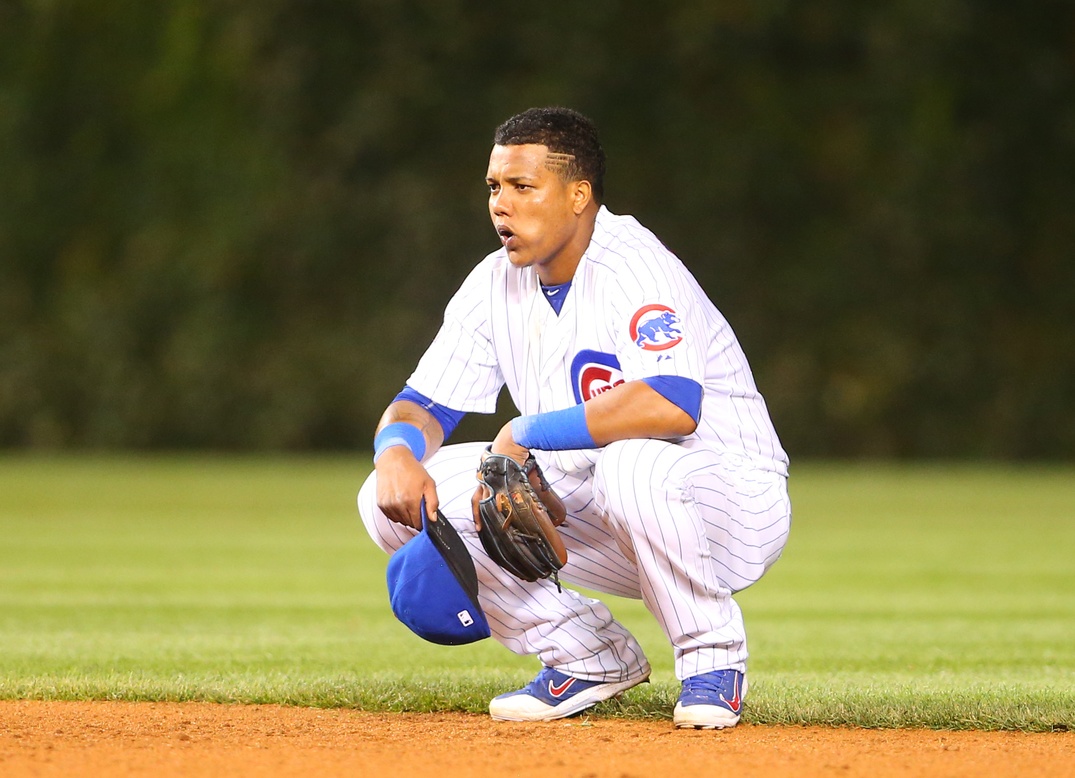“Addison is the shortstop today, he could be the shortstop tomorrow” – Joe Maddon
And so Castro sits, under the weight of a -0.1 WARP, under the weight of his .236/.271/.304 slash line, under the weight of unimproved defense and mental lapses, under the weight of it all, he sits. The future that Theo Epstein and company promised way back in 2012 is on the horizon and the picture that is coming into focus has Addison Russell at short and Castro out of the picture. It’s a stark difference from era where Castro was the most vibrant part of the Cubs future.
Castro the prospect was equal parts exciting and flawed with a future hit tool projection that looked like it could challenge for batting titles and a defensive future that was difficult to imagine holding steady at short.
Castro earns his first mention on our website in Kevin Goldstein’s Top 11 Cubs’ Prospects:
“Perfect World Projection: Castro may be an above-average shortstop who doubles as a good second hitter in the lineup.”
Castro’s ascendency to the Cubs starting shortstop job occurred suddenly as he tore up the spring in 2010 and looked like he could challenge the weak incumbent, Ryan Theriot, for the job. Castro would have to wait as the Cubs elected to assign him to Double-A Tennessee where he slashed .355/.401/.509, but with the Cubs still trying to cling to faint playoff hopes on May 7th, he earned the call to the big leagues.
When it comes to hyped prospects, first impressions burn the brightest. Castro’s debut inspired some absolutely reckless projections that for a moment looked like they could come to fruition. The baby-faced shortstop was a hitting savant in those first two years. He was striking out under 15 percent of the time and would go for long stretches without even swinging and missing at a pitch. He was the master of the ass-out, base-hit-the-other-way for a single. The power projections were limited because of the swing, but Castro had enough power to hit the gaps and just enough speed to use that power and tease double-digit triple numbers a few times.
Castro’s competence at the plate was tempered by some of the flaws that were apparent with him as a prospect. The Goldstein article mentions a lack of plate discipline and a seeming inability to take a walk. It didn’t matter as much when Castro was hitting .300, but the walk totals that were in the 30s were very apparent. Castro’s defensive polish in 2010 never really improved and Castro would become an inconsistent defender at one of baseball’s most important defensive position. Castro was prone to mental errors and his hands would come and go. For all the flashes of competence he displayed, his greatest undoing was his inability to remain consistent in the field.
For three years Castro was the face of the franchise. He was the All-Star starting shortstop on a team that had little else to offer. When the new regime took over in 2012, it was clear that a shift was underway in terms of player development philosophy. Theo Epstein had earned a reputation for valuing on-base skills and competent defense at important positions, two areas where Castro was certainly deficient. Castro was still an All-Star in 2012, but his inability to control the strike-zone was becoming a focal point for a would-be star player whose sheen was starting to dull.
The bottom fell out in 2013, as Castro had one of the worst offensive seasons by a starter in baseball history. He was never a power hitter, so his value was strictly tied to his batting average. The Cubs tried to instill a more patient approach with Castro and it backfired spectacularly as he hit .245/.284/.347 with a 73 OPS+. His mental lapses in the field were more glaring with the lack of offensive production. Rumors about his demise spiked, as Castro completely fell flat.
Castro’s great redemption seemed to be underway last year when he got back on track and displayed more power than he ever had before, but the warning signs were still there. Castro had developed an unfortunate inability to barrel up fastballs during his bottoming out period. His tenuous command of the strike zone worsened, and while he was back on track from a batting average standpoint he was still striking out nearly four percentage points higher than he had during his prime offensive years. Castro was better in 2014 and there was reason for optimism, but it was a cautious hope as we waited for him to prove that he could do it again.
He couldn’t.
Castro had is share of high-profile off-the-field issues. But even aside from all of that, the picture that has been painted of Castro is that of broken promises and controversy. And while he’s likely taken some unfair heat, with both fans and media piling on at an unnecessary level (many point to Bobby Valentine’s criticism during a Sunday Night Baseball as over the top, but even that earned Castro a mental day off), but Castro apologizing for an on-field mistake became sort of trend (a quick Google search finds he’s apologized to teammates at least once in each of the last three seasons—2013, 2014, and just this past June). Castro was on a Hall-of-Fame track and the future that he teased was always larger than the actualization of his skill set. He was once the future for a franchise whose heading was always pointed towards tomorrow and next year. Now he has receded into a crowded offensive background and will likely not emerge again while he’s with the Cubs. Castro’s bat has gone silent, shushed by his shortcomings and flawed approach, and the only sound that can be heard are the faint echoes of failed potential and a future that could have been.
Lead photo courtesy of Caylor Arnold-USA TODAY Sports
